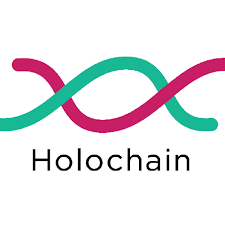Latest news about Bitcoin and all cryptocurrencies. Your daily crypto news habit.

Distributed computing and applications
After two years of frontier knife-fighting, or for what passes as business in the West Africa, I returned to the U.S. seeking financial and green energy solutions for the complex needs of sub-Saharan Africa. My path took me from Seattle, Phoenix, San Diego, and Los Angeles — to the posh heights of San Francisco. I soon learned how the Blockchain can create localized economies, offering a tool that can place value on resources readily available to anyone anywhere. This new technology serves as an economic model that side-steps many of the obstacles facing Africans’ capacity to build the next generation of energy infrastructure. As I traveled down the new logic lines the Blockchain revealed, I came across the next evolution of decentralization.
Bitcoin is the first generation Blockchain, straightforward in its functionality as a money. Second generation blockchains like Waves, Ethereum or Litecoin offer revolutionary utility, yet are burdened with issues of speed and scalability; true victims of their own successes.
The third generation blockchains, are not even really blockchains. Taking decentralization the next level, this new generation of chains solves scale and speed issues and the cumbersome problem of crypto-mining. By decentralizing the computing and hosting functions to a device-to-device internet; the next generation decentralized apps will no longer require mining, nor no centralized servers. It can be summed up by thinking about every time you watch a video you are also streaming that video for other users, or as you request a ride share, your device will also host the computation needs for two other riders that are requesting their rides.
One company spearheading this evolution is Holochain.
Holochain
Holochain offers a cryptocurrency design pattern scalable and efficient enough to operate on global scale without specialized hardware and without consensus. In doing so, it combines the principles of double-entry accounting with cryptographic signing in order to instantiate a new form of tokenless cryptocurrency. This new system enables the tracking and billing for the trillions of network interactions per second required to run a global-scale, decentralized hosting platform. Holochain’s blend of automation, much like Smart Contracts in a blockchain, uses engineered visibility to enable better decisions by human agents.
Sourcing computing and application at the user level sets the conditions for a bottom-up system that weighs capacity from the lowest-levels, without the need for global consensus or even global mediums.
Meta-Currency
Holochain’s currency system is built within itself, which means that user participation creates value. By design, user participation in a holochain application will offer computing value from their personal devices. As communities of interest set values for their interests, and as they pursue that goal, value is generated by merely participating. Holochains will allow us to create value through participation, so if we set communities of interest in sustainable power generation, social media, or even video gaming, meta-value can be produced in those endeavors.
Holochains set the condition for value to be captured for performing desired tasks, which range from posting to social media and advancing in a video game — to turning waste into electricity or mounting solar panels.
Coinless Mutual Credit System
Individualizing or decentralizing computing rewards users for forming relationships. Quantifying value is correlated to the number of holos in which a user participates.
This new system forces us to redefine how we perceive value and how to measure value without physical or even digital units. Value will be created by how people interact through applications. Merely running applications on your devices will create value in a holochain; applications will then incentivize users to run their applications hence the quid-pro-quo.
Aiding the Human Condition
Philosopher Hanna Arednt explains how reality can be defined through shared experiences that are accessible to multiple observers. Hanna further describes; “the end of the common world is come when it is seen under only one aspect and is permitted to present itself in only one perspective.” One can argue that dominate algorithms and centralized server networks, like the Google Empire, forces this mono-perspective.
Holochains are in tune with this diverse perspectives requirement to find the truest reality. Allowing the user/observer to decide through action what is important; this puts power back in the hands of humans. With holochains, algorithms serve and aid humans and stop dictating to humans.
Are There Legitimate Alternatives to Blockchain Functionality? was originally published in Hacker Noon on Medium, where people are continuing the conversation by highlighting and responding to this story.
Disclaimer
The views and opinions expressed in this article are solely those of the authors and do not reflect the views of Bitcoin Insider. Every investment and trading move involves risk - this is especially true for cryptocurrencies given their volatility. We strongly advise our readers to conduct their own research when making a decision.
